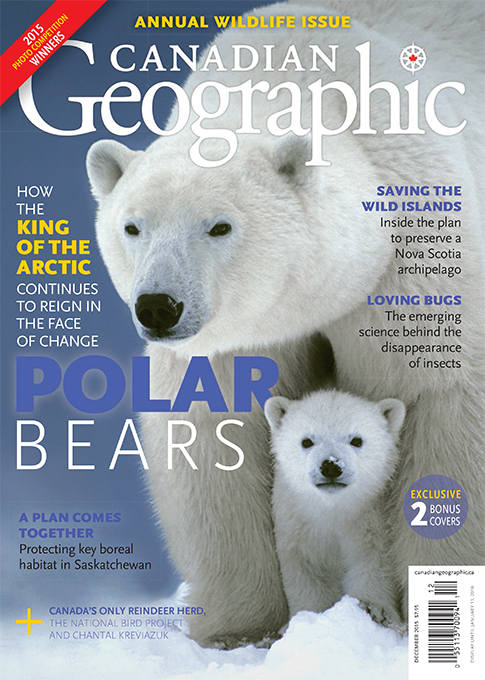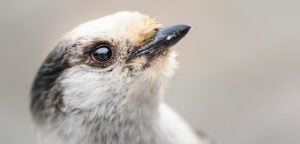Insects are reviled by many in the human world yet beloved–not to mention crucial–to many in the animal kingdom. But what are the most important insects within Canada? Robert Anderson, a research scientist at the Canadian Museum of Nature and weevil expert, helped narrow the selection. It was a daunting task. For our purposes, “important” could imply anything from impact on biodiversity, relevance to people’s lives, or just that the insect has some neat tricks up its proboscis.
1. Gynaephora groenlandica, Arctic woolly bear moths
Found in the arctic islands, these moths survive ultracold freezing temperatures. Research into their freeze tolerance has been applied into the world of sperm-preservation for artificial insemination of livestock, and helped extend the length of time organs can be stored for human transplant.
2. Simulium, Black fly genus
Black flies are all over Canada, but there are some species living in the prairies that are so abundant they can impact cattle health and transmit onchocerciasis, because of their numbers and their blood feeding habits.
3. Lethocerus americanus, Giant water bug
This is probably Canada’s biggest insect (exclusive of wings). Also known as toe-biters and alligator ticks, this aquatic insect can reach lengths rivaling some of the largest beetles in the world. They are aquatic and feed on other insects but also small fish, tadpoles and there is record of one eating a small snake.
4. Grylloblattidae, family of extremophile insects
These wingless insects were discovered in Canada in the Rockies where they live along the edges of ice fields in rock crevices. They are related to cockroaches, grasshoppers and crickets. They are the symbol for the Canadian Entomological Society.
5. Cicindela sexguttata, Six-spotted tiger beetle
This common insect is a bright green or blue beetle that lives along trails in forests of eastern Canada. The larvae dig holes in the ground and wait for passing insects to go by and then they jump out and catch them like trap-door spiders. The adults are especially fast runners and flyers.
6. Tegeticula yuccasella, Yucca moth
These moths pollinate Yucca plants in the west and, along with the plants, have been considered for endangered species classification in Canada. The moths and plants are dependent on each other: without the moths, the yucca plants don’t get pollinated, and without the plants, the moths lose their food source.
7. Camponotus, Carpenter ants
Sometimes confused with termites, carpenter ants are known as a nuisance in homes as they destroy wooden structures in their search for food. Carpenter ants eat both plant and animal matter, and build nests by burrowing into wood. They dig tunnels (called galleries) much longer than those created by termites. To add insult to injury, the wood is not eaten, but thrown from the nest as sawdust-like shavings.






